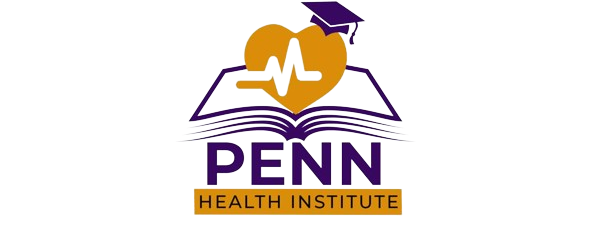Description
Take the next step in your career! Whether you’re an up-and-coming professional, an experienced executive, aspiring manager, budding Professional. This course is an opportunity to sharpen your working capital management capabilities, increase your efficiency for professional growth and make a positive and lasting impact in the business or organization.
With this course as your guide, you learn how to:
-
All the basic functions and skills required for working capital management.
-
Transform planning of working capital, financing of working capital needs. The financing mixes. Credit risk management. Cash management and cash planning, cash flow forecasting and treasury management.
-
Get access to recommended templates and formats for the detail’s information related to Working capital management
-
Learn useful case studies, understanding receivables management, factoring, inventory management. Integration of working capital and capital investment process, Working capital management practices in India.
-
Invest in yourself today and reap the benefits for years to come.
The Frameworks of the Course
Engaging video lectures, case studies, assessment, downloadable resources and interactive exercises. This course is created to Learn about Working capital Management, planning of working capital, financing of working capital needs. The financing mix. Credit risk management.
Inventory management and the cash management and cash planning will help you to understand the details about the different aspects of the cash management. Factors determining the cash balances. Cash balance and the futures and options.
The course includes multiple Case studies, resources like formats-templates-worksheets-reading materials, quizzes, self-assessment, film study and assignments to nurture and upgrade your Working capital management.
In the first part of the course, you’ll learn the details of the Working capital management, planning of working capital, Financing of working capital needs, the financing mix. Credit risk management.
In the middle part of the course, you’ll learn how to develop a knowledge managing collection and the disbursement of working capital, cash management, cash planning. Cash flow forecasting and Treasury management. Receivables management.
In the final part of the course, you’ll develop the knowledge related to the factoring, Inventory management. Integration of Working capital and Capital investment Process. Working capital management practices in India.
Course Content:
Part 1
Introduction and Study Plan
· Introduction and know your Instructor
· Study Plan and Structure of the Course
1. Introduction to Working Capital Management
1.1. Introduction
1.2. Concept of Working Capital
1.3. Balance Sheet Concept
1.4. Importance of Working Capital
1.5. Factors Affecting Working Capital Requirements
1.6. Levels of Working Capital Investment
1.7. Overall Working Capital Policy
2. Planning of working capital
2.1. Introduction
2.2. Gross Working Capital
2.3. Operating Cycle
2.4. Significance of Operating Cycle
2.5. Estimation of Working Capital Requirements
2.6. Determinants of Working Capital
2.7. Production Cycle
2.8. Business Cycle
2.9. Growth and Expansion
3. Financing of Working capital needs.
3.1. Introduction
3.2. Commercial Banks
3.3. Trade Credit
4. The financing Mix.
4.1. Introduction.
4.2. Working Capital and Banking Policy
4.3. Recommendations of Tandon Committee
4.4. Recommendations of Chore Committee
4.5. Recommendations of Marathe Committee
4.6. Recommendations of Kannan Committee
5. Credit Risk Management
5.1. Introduction
5.2. Risk Management
5.3. Credit Risk
5.4. Risk Rating Model
5.5. Principles for the Management of Credit Risk
5.6. Credit Rating
5.7. Credit Scoring
6. Managing Collection and Disbursement of Working capital.
6.1. Introduction
6.2. Controlling Disbursements
6.3. Finding the Optimal Working Balance
6.4. Planning Cash Requirement
6.5. Investing Idle Cash
6.6. Investment Criteria
6.7. Yields
7. Cash Management
7.1. Introduction
7.2. Aspects of Cash Management
7.3. Motives for Holding Cash and Marketable Securities
7.4. Factors Determining the Optimum Cash Balance
7.5. Stone Model
8. Cash Planning
8.1. Introduction
8.2. Cash Budget Simulation
8.3. Cash Balance
8.4. Cash Balance Uncertainties
8.5. Estimating Uncertainty in Cash Forecasts
8.6. Hedging vs Interest Rate
8.7. Future and Options
9. Cash Flows Forecasting and Treasury Management
9.1. Introduction
9.2. Cash Forecasting Horizons
9.3. Hedging Cash Balance Uncertainties
9.4. Treasury Risk Management
Part 2
10. Receivable Management
10.1. Introduction.
11. Factoring
11.1. Introduction.
11.2. Role of Factoring in Receivables Management Tax Considerations in Liquidations
12. Inventory Management
12.1. Introduction
12.2. Tools and Techniques of Inventory Management
12.3. SOS Classification
12.4. Basic EOQ Model
12.5. Valuation of Inventories
12.6. Average Cost Method
12.7. First-In First-Out (FIFO) Inventory Method
12.8. Base Stock Method
12.9. Last-In First-Out (LIFO) Inventory Method
12.10. Inventory Management and Cash Flow Timeline
13. Integration of Working Capital and Capital Investment Process
13.1. Introduction
13.2. Investment Decision
13.3. Project Valuation
13.4. Working Capital Decisions vs Capital Investment Decisions
13.5. Role of Working Capital in the Investment Process
14. Working Capital Management Practices in India
14.1. Introduction
14.2. Security Required in Bank Finance
14.3. Working Capital Management under Inflation
Part 3
15. Assignments
-
Working Capital Management Process
-
Working Capital Management case study
-
Working Capital Management templates
Working Capital Management
Working capital management involves overseeing a company’s operational liquidity, ensuring that it has enough short-term assets to cover its short-term liabilities. The goal is to maintain a balance between current assets and liabilities to support the day-to-day operations efficiently. Here are some key aspects of working capital management:
-
Components of Working Capital:
-
Current Assets: These are assets that are expected to be converted into cash or used up within one year. Examples include cash, accounts receivable, and inventory.
-
Current Liabilities: These are obligations that are due within one year, such as accounts payable and short-term debt.
-
-
Key Metrics:
-
Current Ratio: It’s the ratio of current assets to current liabilities. A ratio above 1 indicates that a company has more assets than liabilities in the short term.
-
Quick Ratio (Acid-Test Ratio): This ratio excludes inventory from current assets to provide a more conservative measure of a company’s ability to meet its short-term obligations.
-
-
Cash Management:
-
Efficient management of cash is crucial. This involves optimizing cash inflows and outflows, monitoring daily cash positions, and having effective cash forecasting.
-
-
Accounts Receivable Management:
-
Balancing credit terms with customers to ensure timely payments.
-
Implementing effective invoicing and collection processes.
-
-
Inventory Management:
-
Balancing the costs of holding inventory with the need to avoid stockouts.
-
Employing techniques like just-in-time (JIT) inventory management to minimize holding costs.
-
-
Accounts Payable Management:
-
Negotiating favorable payment terms with suppliers without harming relationships.
-
Ensuring timely payments to take advantage of any available discounts.
-
-
Working Capital Financing:
-
Identifying appropriate short-term financing options to cover any shortfalls.
-
Balancing the cost of financing with the benefits of having enough liquidity.
-
-
Risk Management:
-
Identifying and managing risks associated with working capital, such as currency risk or interest rate risk.
-
-
Continuous Monitoring and Improvement:
-
Regularly reviewing and adjusting strategies based on changes in business conditions.
-
Utilizing technology and automation to streamline processes and enhance efficiency.
-
-
Industry and Seasonal Variations:
-
Recognizing that working capital needs may vary by industry and can be influenced by seasonal factors.
-
Efficient working capital management is crucial for the smooth day-to-day operations of a business. It ensures that a company can meet its short-term obligations while also having the necessary resources to invest in growth opportunities. Striking the right balance is key to maintaining financial health and sustaining long-term success.





